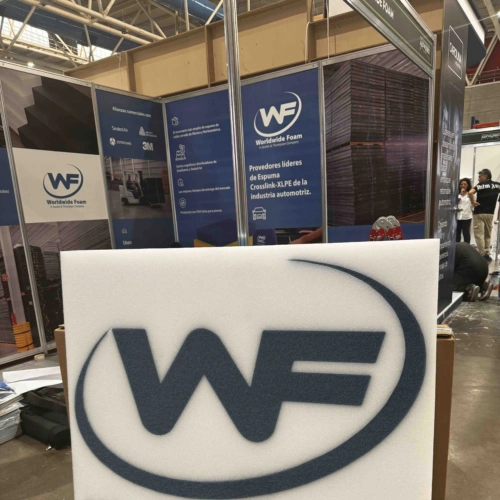| August 28, 2024
Polyethylene foam is a versatile and widely used material in various packaging and general distribution applications. One of its key properties is its stretch length, which refers to the material's ability to stretch under stress before breaking.
In this article, we will explain in detail what the stretch length of polyethylene foam is, what its limits are, and how this characteristic is measured.
What does stretch length refer to?
Stretch length, expressed as a percentage, is the ability of a material to stretch from its original length to its breaking point. In the case of polyethylene foam, this property is essential for applications that require flexibility and durability.
According to the ASTM D3575 test method, the stretch length is measured by subjecting a sample of the material to stress until it breaks, and the percent stretch length is calculated based on the length stretched before tearing.
Importance of stretch length in polyethylene foam
The stretch length of polyethylene foam is a crucial indicator of its ability to withstand stress and deformation without losing its integrity, capacity, or properties.
This is particularly important in applications such as packaging, where the foam must protect products from impact and vibration, or in construction, where it is used for insulation and cushioning.
What does the stretch length produced by stress refer to?
When we talk about stress-stretch length, we refer to the process by which polyethylene foam is stretched under the application of an external force. This force can come from various sources, such as pressure, tension, or impact.
The ability of the foam to stretch without breaking is critical to ensuring its effectiveness and durability in various applications.
Factors affecting the stretch length of polyethylene foam
Foam density: the density of polyethylene foam can significantly influence its stretch length. Generally, lower-density foams tend to have a higher stretch capacity due to their more open cell structure.
Temperature: temperature can also affect the stretch length of polyethylene foam. At higher temperatures, the foam may become more flexible and have greater stretchability, while at lower temperatures, it may become more rigid and brittle.
Additives: additives used in the formulation of polyethylene foam, such as antistatic agents or flame retardants, can alter its mechanical properties, including stretch length.
Limits of stretch length in polyethylene foam
The stretch length of polyethylene foam has specific limits that vary according to the formulation and type of foam. These limits are essential for defining the appropriate applications for each type of foam.
To learn more about the stretch length properties, please visit our website, where you will find the technical data sheets for each of the packaging materials we offer, including their stretch length percentages.
Stretch length measurement: ASTM D3575 method
The ASTM D3575 test method is the standard used to measure the stretch length of polyethylene foam. This method involves cutting a sample of the material into a specific shape and then subjecting it to controlled tension until it breaks.
The stretch length is calculated as the percentage of stretch of the sample from its original length to the breaking point. This test provides an accurate and repeatable measure of the material's ability to stretch.
Practical applications of stretch length in polyethylene foam
Protective packaging: in packaging applications, the stretch length of polyethylene foam allows the material to absorb impacts and protect fragile products during transportation.
Insulation and construction: in construction, the stretch length capability of foam contributes to its effectiveness as an insulation and cushioning material, allowing it to adapt to deformations without compromising its integrity.
Sports and leisure: stretch length is crucial in products such as gymnastics mats, sports pads, and other equipment where a combination of flexibility and strength is required.
The stretch length of polyethylene foam is a fundamental property that determines its performance in various applications. Understanding what stretch length refers to and knowing its limits is essential for selecting the right type of foam for each specific need.
With standardized test methods such as ASTM D3575, it is possible to evaluate and ensure the quality and durability of polyethylene foam in its many industrial and commercial uses.
By taking advantage of the stretch length characteristics of polyethylene foam, innovative and effective solutions can be developed to maximize the functionality and strength of products, ensuring their performance and longevity in a wide range of applications.
Worldwide Foam

We are leaders in the supply of closed cell polyethylene foam in Mexico. We support various industries by offering a wide range of products and complementary services.










